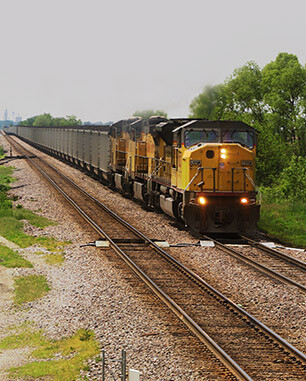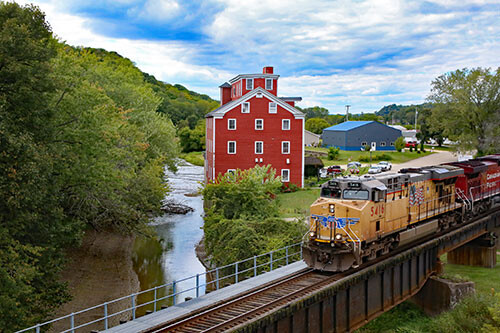
Train horns are required to be sounded by the railroad when approaching a highway-railroad grade crossings. A Federal Railroad Administration rule (49 CFR Parts 222 and 229) guides when and how train horns are to be sounded at crossings.
Train Horn Rule
Under the Train Horn Rule (49 CFR Part 222, issued on August 17, 2006), locomotive engineers must begin to sound train horns at least 15 seconds, and no more than 20 seconds, in advance of all public grade crossings. If a train is traveling faster than 60 mph, engineers will not sound the horn until it is within 1/4 mile of the crossing, even if the advance warning is less than 15 seconds. There is a "good faith" exception for locations where engineers cannot precisely estimate their arrival at a crossing and may begin to sound the horn no more than 25 seconds before arriving at the crossing
Sound Patterns
Train horns must be sounded in a standardized pattern of 2 long, 1 short, and 1 long blasts. The pattern must be repeated or prolonged until the lead locomotive or lead cab car occupies the grade crossing. The rule does not stipulate the durations of long and short blasts. The maximum volume level for the train horn is 110 decibels, and the minimum sound level is 96 decibels.
Quiet Zone

Included in the rule are ways in which communities can make safety improvements to silence the horns through the establishment of a quiet zone. The Federal Railroad Administration's Web site includes additional guidance on creating a quiet zone. The Rail Team has compiled a list of the appropriate railroad contacts for quiet zone issues in Iowa.
When the rule established the requirement for routine sounding of the locomotive horn, a procedure was also established whereby localities that could meet certain safety requirements might designate as a “quiet zone” a segment of a rail line with one or more consecutive public highway-rail grade crossings. Upon satisfying the regulation’s technical requirements, locomotive horns would not be routinely sounded within this quiet zone.
Only a public authority may establish quiet zones. “Public authority” means the public entity (such as a city or county) responsible for traffic control or law enforcement at the public highway-rail grade crossings under consideration.
Localities that want to establish a quiet zone are first required to mitigate the increased risk caused by the absence of a horn. In a quiet zone, train horns may still be used in emergency situations or to comply with other Federal regulations or railroad operating rules. Additionally, a “no horn” restriction that may have existed prior to the establishment of the rule may have been duly qualified to be a “pre-rule quiet zone.”
Learn how to create a quiet zone here. The Rail Team has compiled a list of the appropriate railroad contacts for quiet zone issues in Iowa.